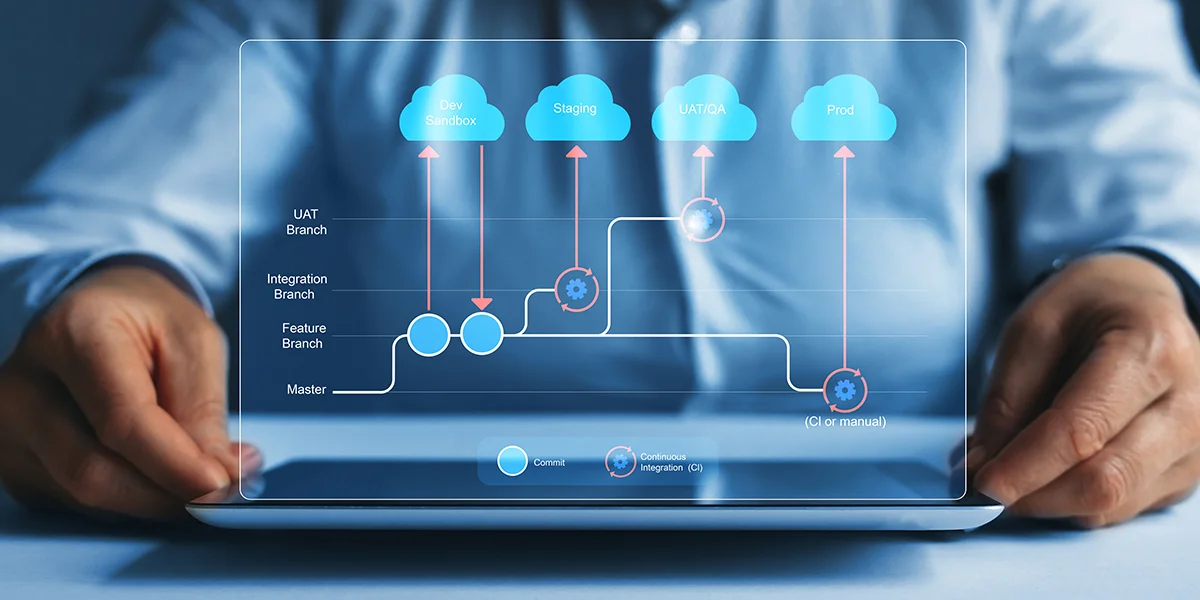Reselling information represents a huge, and largely unexplored, business opportunity, especially for product manufacturers.
But information portability plays a critical role in this area. Few companies are interested in purchasing a bundle of disparate, unorganized .txt files and Word docs, but the prospect of accessing focused and curated XML documentation (which, better yet, updates as new information becomes available), well, that’s a very different prospect, indeed.
In Part One of our interview, Claude Vanbeveren recounted Service Portal’s early development. Now, in Part Two of our discussion, he looks at everything Service Portal can contain, the various users it can serve, how its basic structure lends itself to reselling information, and how that creates a system so good at paying for itself.
Supporting the Product Ecosystem by Reselling Information
How did the first iterations of Service Portal evolve, once it was rolled out?
Initially the platform only served out technical documentation, just the technical publications themselves.
We caught up to what it could do pretty quickly. Being digital, you’re not limited by page count. You’ve got hyperlinks so you can fly off to all these other modules of information. We started to incorporate other things, and these things greatly enhanced the value of the overall platform.
First, we added access to services, to diagnostics and electronic parts catalogs.
It’s a no-brainer to let the information network grow exponentially.
We said, “For remote repair, should we also show the actual DTC’s coming in, because that’s available now as well?”
And it works quite nicely. When you constrain these information modules in a logical way, when you curate access and availability by role but leverage it from a central repository, you increase the overall value while maintaining a streamlined user experience.
So, companies come to Service Portal because legislation makes it necessary…
Yes, and for that it’s pure gold, because that legislation is constantly changing. As a flexible platform it makes it easy to keep up with that. You don’t have to trash the whole system because some law changed. You can very easily modify the system, and simply keep moving forward.
So that’s one layer of value, and all that is true before you even deal with the feedback loops inherent in a Service Portal system.
What sorts of feedback loops are created as people access and use a digital system like Service Portal?
It’s a whole separate and significant value you can build into these types of platforms.
Companies realize, “Hey, we can gather a bunch of other information just by observing how people are interacting with the system.”
And with this, you move into questions like, “Which features are being used on the platform? What are people having trouble with? Is the system helping them? How could it help them more effectively?” And as you answer these questions you gather valuable information.
So, Service Portal becomes a hub that tracks customer behavior, identifies product use patterns and flags issues for the engineering department—all sort of on top of, or in addition to, its basic purpose, which is just to help stay abreast of legal requirements.
You’re describing a wide range of features here. When it comes down to it, who is Service Portal’s target user? Is it for the technician, is it for the executive team, is it for the service operation at a manufacturer?
This is the important question.
Once upon a time, there were some clear distinctions between, say, the service portal over here—which was just for repair information—and then you had the ownership information portal over there—and that was your “customer portal”, and that was specifically geared toward owners of the vehicle. And then you had your tables, your business objects over here, where all this data went into a company’s ‘data lake’ and where executives could look and make very important decisions based on all the information they had gathered.
Separate applications, you know? Separate databases running behind the scenes, all very distinct.
The new methodology is much more product-centric.
Basically there’s one repository, and we’re not gonna be strict about it anymore—whether it’s owner information, repair information, warranty information, engineering information, whatever it is. It pertains to the product. The product is king.
And so, based on your role it will decide what you can see and what you cannot see. Based on your persona we will have different paths for accessing the things you need to see.
What do these access paths look like?
Well, say you log on. The system immediately considers your user parameters and asks itself, based on his role, what is Joe allowed to see? That’s the first level of curation.
Maybe you search for information about a particular topic. Right away, the system sets aside anything not aligned with your role or access parameters, and so you as a user see a range of accessible options about that piece of information.
Let’s say we have a video about it. We have an animation, we have a 3D view. We also have short-form text and a much more detailed long-form text option, and so on.
"And there’s a third layer of value, in that by reselling information with Service Portal, companies facilitate a new category of commercial activity."
So, if this is your first time using the system, it would just serve it all to you and you can start learning what you like.
If you always click on the videos, the system learns that about you and, moving forward, if there’s a video available it will be pushed out to you in front of the other options.
It’s a user experience we’re all accustomed to, but applied to great practical effect in a context where things are usually far less user-friendly.
So, to get your head around the Service Portal concept, you really just have to picture all the information pertaining to a product, aggregated into one definitive, central repository. You envision that information being filtered out in curated streams to individual users, presented according to individual use patterns. And of course there’s the insight provided by observing the use of this system itself by different groups and so on.
That’s it.
And there’s a third layer of value, in that the Service Portal also facilitates its own category of commercial activity.

Commercial activity?
Absolutely. You know, aside from what this information tells you about your product, and about how people use your product, companies can take the system and the information it creates and sell that to independent service locations.
A few of our OEM clients are reselling information licenses on behalf of the manufacturer, licenses for the spare parts catalog and things like that. Toyota, for example, has done an excellent job spreading the benefits of Service Portal to other entities in their ecosystem.
So now Service Portal supports many other players who interact with Toyota products, and Toyota is very smart about it from a business perspective.
You can imagine how that plays out, right? Because the system is not only being accessed by the technician or by the owner. People from insurance companies, independent repair outlets, rental companies, from the military—all make their own use of the system.
So, what does that look like? For example, how does Service Portal work for me if I access it from an insurance company?
Well, so, let’s say you work for the insurance company and a client submits a claim. You need to figure out how much this claim is going to cost.
You go into Service Portal, you do a VIN search on their vehicle, and the system shows you the spare parts for that vehicle. You can see the pricing for all the necessary spare parts, and now you can calculate the cost of their claim.
One insurance company we work with might receive 10,000 calls per day. To fulfill these calls they might also need to know the exact trim level of the vehicle for which a claim is being made.
So, they go into the system—again, punch in the vehicle’s VIN—and very quickly they know the exact specifications for that vehicle.
Does it have air conditioning? Automatic or manual? Does it have the high-end engine? Leather seats versus maybe nylon? There’s a lot of difference, no? Any of that could impact the spare parts needed to satisfy the claim. And if we’re looking at a high trim level, it’s gonna cost a lot more.
So Service Portal makes it easier for insurance companies to address those claims in a fast and accurate way.
Okay. That makes sense.
So they ping it, they get the information they need.
It’s a simple transaction.
What other types of entities might make use of the information?
The system can provide an authorized repair view, it also provides an independent repair view. Each entity gets the appropriate view based on what they need to see.
XML manages everything on the back end.
So, a manufacturer like Toyota recognizes the benefit and support that the information provides these different entities, and provides it in the form of access licenses. And the independent repair outlets, especially, find great utility in being able to access this information.
And it’s great from the user standpoint, because the license purchaser effectively subscribes to the information they want.
Different entities can subscribe to unique bundles of information relevant to their specific use cases, and get limited access to particular subsets of data.
The subscriber can feed this information into their own portal, and they can feed information from other sources into this portal—in either case, that’s nice because then users don’t have to jump to a million different places. They can use the portal they prefer, fortified with the added value of this other information.
"We’ve seen a more transactional approach, as well, reselling information to the insurance companies, where agents need a specific piece of information but are pinging it many times a day."
Do a lot of subscribers take advantage of that option, where they integrate the content into their own pre-existing portal?
Yeah, I mean, let’s say you’re the military. Let’s say your operation only uses, say, Toyota and Nissan products.
You might have a situation where your users go out to the Nissan independent website to get info for their Nissan products, then they go to the Toyota website for these other products. But that’s a hassle, right? It’s less than ideal as a user experience.
It’s much better to have one interface integrating data from both companies in a single portal. Service Portal’s structure makes that easy to do.
We have a recreational vehicle client who takes the same approach. Their products might use components from a bunch of different manufacturers. The RV has this refrigerator, a sink from another manufacturer, a screen of some kind from another.
Service Portal makes the connection between these different component manufacturers, and that alleviates the need to upload all this information to a single location. When you search for a particular VIN, it can call in information for the actual components tied to that VIN.

I know with vehicles, or products like them, there’s a lot of dynamic change, as features and components evolve. Do these information subscribers have a way of keeping the content up-to-date?
It’s part of the subscription. They’re reselling information updates, as it were.
The customer gets the data, usually as a couple of gigabytes of nicely bundled, very portable XML.
Then the system pings them periodically. It lets them know when there’s an update. People typically buy a two-year subscription to get these updates.
After the second year they can say, “We’re all set”, or they can choose to continue.
If you let the subscription lapse, then you’re no longer able to ping the system and grab that information back.
Correct, your access is blocked.
And is there a set charge for the access?
Well, it’s up to our client to decide what they want to charge their subscribers.
We don’t charge for these licenses, you know. We just support the activity. We maintain the structure that makes reselling information possible.
I think it’s most common for our clients to sell licenses for 10,000 pings or something like that. It’s based on usage.

So, an industrious OEM might leverage licensing options to help defray the cost of Service Portal itself.
Very much so. It creates new income streams and we’re seeing more and more ways to actually repurpose the information.
At first it was primarily just independent repairers buying in.
Then some of our clients looked at B2B content resale and they’re reselling information on that side as well.
More recently, we’ve seen a third category of resale, and those are more transactional—reselling information to the insurance companies and so forth—where they just need a specific piece of information, but they’re pinging it many times every day.
Partner sales are emerging as a fourth category. This is where someone like a Kubota or a Toyota sells their engine technology. They’ll provide, for example, their fuel cell manual to partners who have purchased that technology, in a portable format, and we may build an iteration of Service Portal around that information.
So now there’s almost nothing, so it would be very easy to say, OK, you actually have access to this information.
The Fuel Cell Service Portal provides access to all the repair and maintenance information, the installation manuals—everything they need to support that particular component.
That’s something we’ve done in both the US and in Europe.
To what extent does reselling information help cover the investment price of Service Portal? Does it make a significant dent? Can a client expect it to cover ten percent of the price, a quarter..
It makes a profit.
Does it cover half?
It makes a profit. It makes money.
Really?
Yeah, of course.
I didn’t expect that to be the answer.
That’s the answer. You take a client like Toyota, who realizes the extent to which this tool can support all the various entities surrounding their products. Yes. It pays for itself, and then some.
In our next installment, Claude digs into the XML, metadata and custom APIs that give Service Portal its power.



